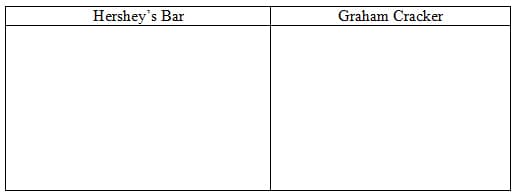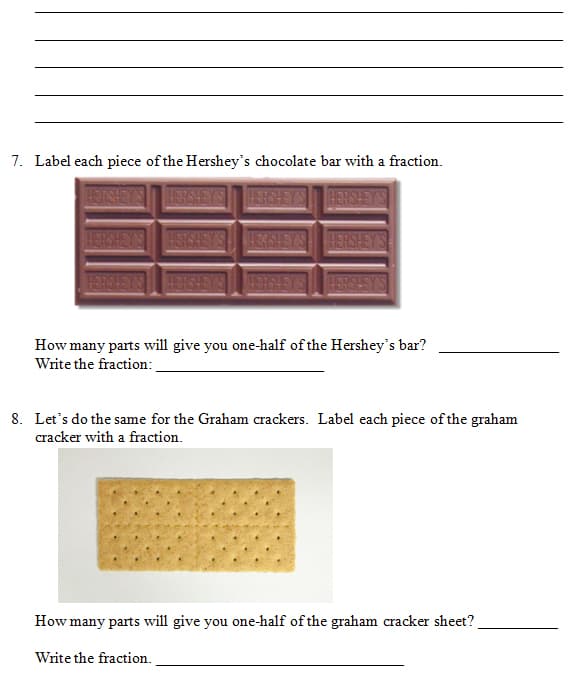Appendix 1
Naming the Unit Fraction: Hershey's Bars and Graham Crackers
1. Draw what each item looks like in the boxes below. Pay close attention to how they are divided.
2.

3. How many pieces are in one whole?
Hershey's Bar:
Graham Cracker:
4. Now that you know how many pieces are in one whole, what is considered to be the noun for each? The noun is known as your unit. (Hint: the total number of parts to equal one whole)
Hershey's Bar:
Graham Cracker:
Use the drawings in number 1. Color in one piece of each of the examples.
Now we write the fraction.
The part you colored will be the number written above the line, the numerator. The total parts will be the number written below the line, the denominator.
Example: Colored Part (numerator)
Total Parts (denominator)
5. Write the fraction that you colored in problem 1 for each.
Hershey's Bar:
Graham Cracker:
Congratulations! You just named a unit fraction!
6. Describe what you notice about each of the pieces in relation to its own whole. Do not compare the pieces to the other whole. Think about why we wouldn't compare the Hershey Bar to the Graham Cracker sheet.


Comments: